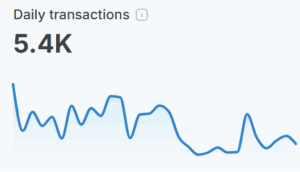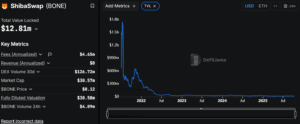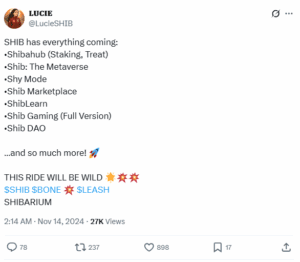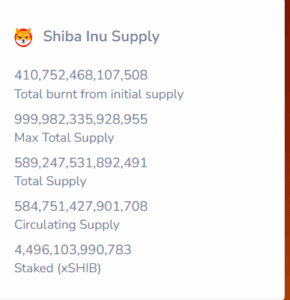Shiba Inu (SHIB) started as a meme token. Over time, its developers and community have worked to add real utility. Today, SHIB is more than a fun coin — it is part of an ecosystem with payments, a blockchain, games, burning mechanics, and more. Let’s look at five real use cases and whether they have the potential to push SHIB’s price upward.
1. Thousands of Merchants Accept SHIB via Crypto Gateways
One of the clearest signs of SHIB’s progress is its acceptance as a form of payment.
According to Lucie, Shiba Inu’s marketing director, major brands such as GameStop, Petco, and Regal Cinemas accept SHIB payments through crypto gateways like BitPay and Flexa. This includes major global brands such as Gucci, GameStop, Petco, and Regal Cinemas, along with earlier adopters like AMC Theatres, Newegg, and Apmex — a leading precious metals dealer.

Through these processors, users can spend SHIB on luxury fashion, movie tickets, electronics, or gold coins. The merchants receive their local currency, while BitPay or Flexa handle crypto conversion, protecting them from volatility.
While the total value of SHIB payments remains unclear — since processors don’t publish spending volumes — the presence of these high-profile names proves the token’s reach has gone beyond hype.
Even if merchants don’t hold SHIB directly, the ability to spend it at globally recognized stores gives the ecosystem credibility that few other meme coins have achieved.
2. Layer-2 / Shibarium & Ecosystem Infrastructure
At the core of SHIB’s ecosystem is Shibarium, a Layer-2 blockchain built on Ethereum. It was created to make SHIB transactions faster and cheaper while enabling new decentralized applications (dApps), games, and token utilities.
Since its launch, Shibarium has processed over 1.5 billion transactions and recorded more than 260,000 wallet addresses. The network once averaged millions of daily transactions. However, in late 2025 that activity dropped to around 11,000–12,000 per day, showing inconsistent engagement.

Despite the decline, Shibarium remains the operational backbone of SHIB’s ecosystem. It supports functions such as token burning, NFT minting, and in-ecosystem transfers across ShibaSwap and other SHIB projects.
However, development activity on Shiba Inu’s codebase has now stalled. The developer activity score sits at 0.85. The active contributor count is zero as of October 2025.

This confirms that there are no active developers currently working on SHIB’s public repositories. This could limit the pace of new upgrades or product launches in the near term.
3. Shiba Inu’s Staking, Liquidity & DeFi Activities
ShibaSwap, launched in July 2021, is Shiba Inu’s decentralized exchange (DEX). It allows users to trade SHIB tokens, stake SHIB, and provide liquidity to earn rewards in BONE and LEASH.
Data from DefiLlama shows that as of October 2025, ShibaSwap’s total value locked (TVL) is about $12.99 million — with $12.43 million on Ethereum and around $555,000 on Shibarium. In comparison, its TVL exceeded $70 million in mid-2023.

Daily swap volumes now average below $1 million. This is a fraction of major DEXs like Uniswap or PancakeSwap that handle billions daily. This shows that ShibaSwap’s liquidity remains small but stable.
In 2025, ShibaSwap received a major upgrade featuring cross-chain support between Ethereum and Polygon. This included an improved user interface, and new liquidity management tools. These updates make it easier for holders to stake and trade, though adoption still trails larger DeFi platforms.
Beyond finance, Shiba Inu’s team has been developing entertainment-focused projects aimed at mainstream audiences.
Lucie outlined the ecosystem’s growing list of initiatives: Shib Games, a collection of blockchain-based titles; ShibaHub, a platform to promote community participation and brand expansion; and the Shiba Metaverse, a virtual world where users can buy land, trade NFTs, and socialize using SHIB-related assets.

There’s also Shy Mode, a privacy-focused decentralized application that aims to enable anonymous communication and transactions. This is part of the team’s broader push toward privacy tools.
These projects are still under construction and have yet to achieve mass adoption. However, they illustrate SHIB’s ambition to expand beyond speculation and into digital experiences, where the token can serve as both currency and identity.
If even one of these projects gains attention— for example, a game with real daily players or an active metaverse economy — SHIB could see sustained on-chain demand.
5. SHIB Token Burning & Deflationary Pressure
While development continues, SHIB’s community remains committed to its deflationary model through token burning.
Burning means permanently sending tokens to “dead” wallets, removing them from circulation. As of 2025, community trackers estimate that over 410 trillion SHIB have been burned since launch — roughly 41% of total supply.

The burn rate is volatile: in some periods, daily burns surged more than 2,000%, with millions of SHIB destroyed in 24 hours. At other times, burn activity slows dramatically.
Shibarium now automates part of the burn process by linking transaction fees to burn mechanisms, meaning activity on the network directly contributes to supply reduction.
However, even large burns represent a small fraction of SHIB’s total supply, which remains above 500 trillion tokens. While burns help maintain scarcity, they can only support — not replace — organic demand from actual ecosystem use.
